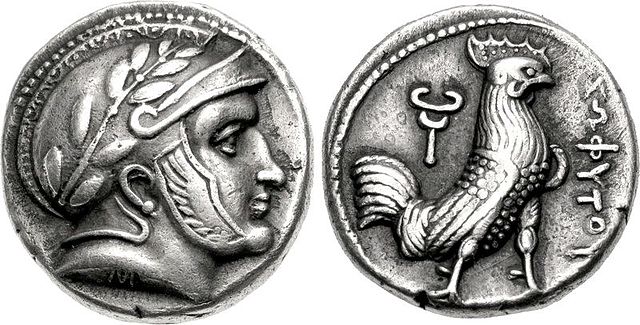The Seleucid–Mauryan War was fought between 305 and 303 BC. It started when Seleucus I Nicator of the Seleucid Empire sought to retake the Indian satrapies of the Macedonian Empire, which had been occupied by Emperor Chandragupta Maurya, of the Maurya Empire.
Alexander the Great's Satrapies in Northern India
Seleukos I Nikator. 312–281 BC. AR Stater (22 mm, 16.88 g, 12 h). Susa mint. Struck circa 288/7 BC. Head of Zeus right, wearing laurel wreath / Elephant advancing right; above, spearhead right.
Sophytes may have been the Mauryan Empire satrap of Arachosia, succeeding Sibyrtius, after Seleucus had ceded the Hellenistic territory of Arachosia to Chandragupta Maurya in the Seleucid–Mauryan war (305–303 BC).
Seleucus I Nicator was a Macedonian Greek general, officer and successor of Alexander the Great who went on to found the eponymous Seleucid Empire, led by the Seleucid dynasty. Initially a secondary player in the power struggles following Alexander's death, Seleucus rose to become the total ruler of Asia Minor, Syria, Mesopotamia, and the Iranian plateau, assuming the title of basileus (emperor). The Seleucid Empire was one of the major powers of the Hellenistic world, until it was overcome by the Roman Republic and Parthian Empire in the late second and early first centuries BC.
Bust of Seleucus I Nicator, Roman artwork of the Imperial era made in a Syrian workshop after a Hellenistic model.
Seleucus led the Royal Hypaspistai during Alexander's Persian campaign.
Ptolemy I Soter, an officer under Alexander the Great, was nominated as the satrap of Egypt. Ptolemy made Ptolemaic Egypt independent and proclaimed himself Basileus and Pharaoh in 305 BC.
Roman copy of a bronze statue of Seleucus found in Herculaneum (now located at the Naples National Archaeological Museum)







